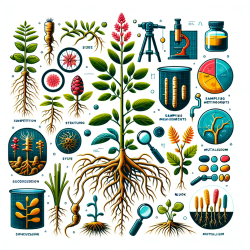Understanding Semantic Interference: A Game-Changer for Speech Therapy
Semantic interference is a fascinating phenomenon that can significantly impact language processing tasks such as picture naming and word-picture matching. Recent research by Harvey and Schnur (2016) sheds light on how semantic interference operates differently in these tasks, providing valuable insights for speech-language pathologists aiming to enhance therapy outcomes for children.
The Research Findings
The study, titled Different Loci of Semantic Interference in Picture Naming vs. Word-Picture Matching Tasks, explored how semantic interference affects performance in picture naming and word-picture matching tasks. The researchers found that while both tasks are influenced by semantic interference, the locus of this interference differs. In picture naming, interference is primarily lexical, while in word-picture matching, it is semantic.
Semantic interference occurs when accessing words or meanings from the same category, which can hinder performance in language tasks. For example, naming a series of animals (e.g., CAT, DOG, BEAR) can slow down the naming process due to the overlap of semantic features. This interference is crucial for understanding how children process language and can be leveraged to improve therapeutic strategies.
Implications for Practitioners
For speech-language pathologists, these findings offer several practical applications:
- Task Design: Understanding the different loci of interference can help design tasks that target specific language processing levels, whether lexical or semantic.
- Therapy Customization: Tailor therapy sessions to focus on either lexical or semantic processing, depending on the child's needs.
- Interference Management: Develop strategies to manage semantic interference, such as varying the semantic categories used in therapy sessions to minimize overlap and improve performance.
Encouraging Further Research
While this study provides a solid foundation, further research is needed to explore how these findings can be directly applied to therapy settings. Practitioners are encouraged to conduct their own research or collaborate with academic institutions to test these concepts in real-world scenarios.
Conclusion
Semantic interference is a complex yet crucial element in understanding language processing. By leveraging the insights from Harvey and Schnur's research, speech-language pathologists can enhance their therapeutic approaches, ultimately leading to better outcomes for children.
To read the original research paper, please follow this link: Different Loci of Semantic Interference in Picture Naming vs. Word-Picture Matching Tasks.










